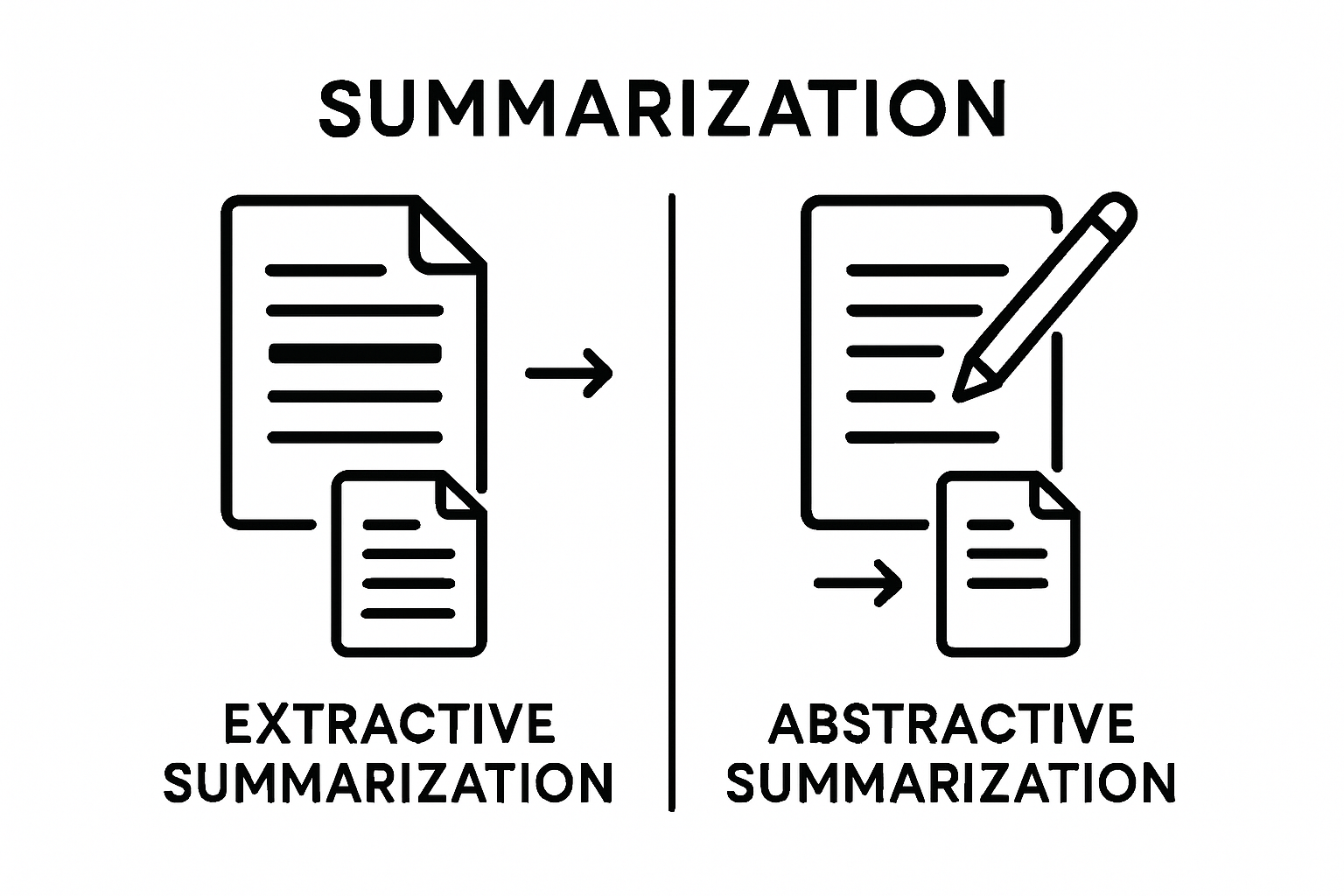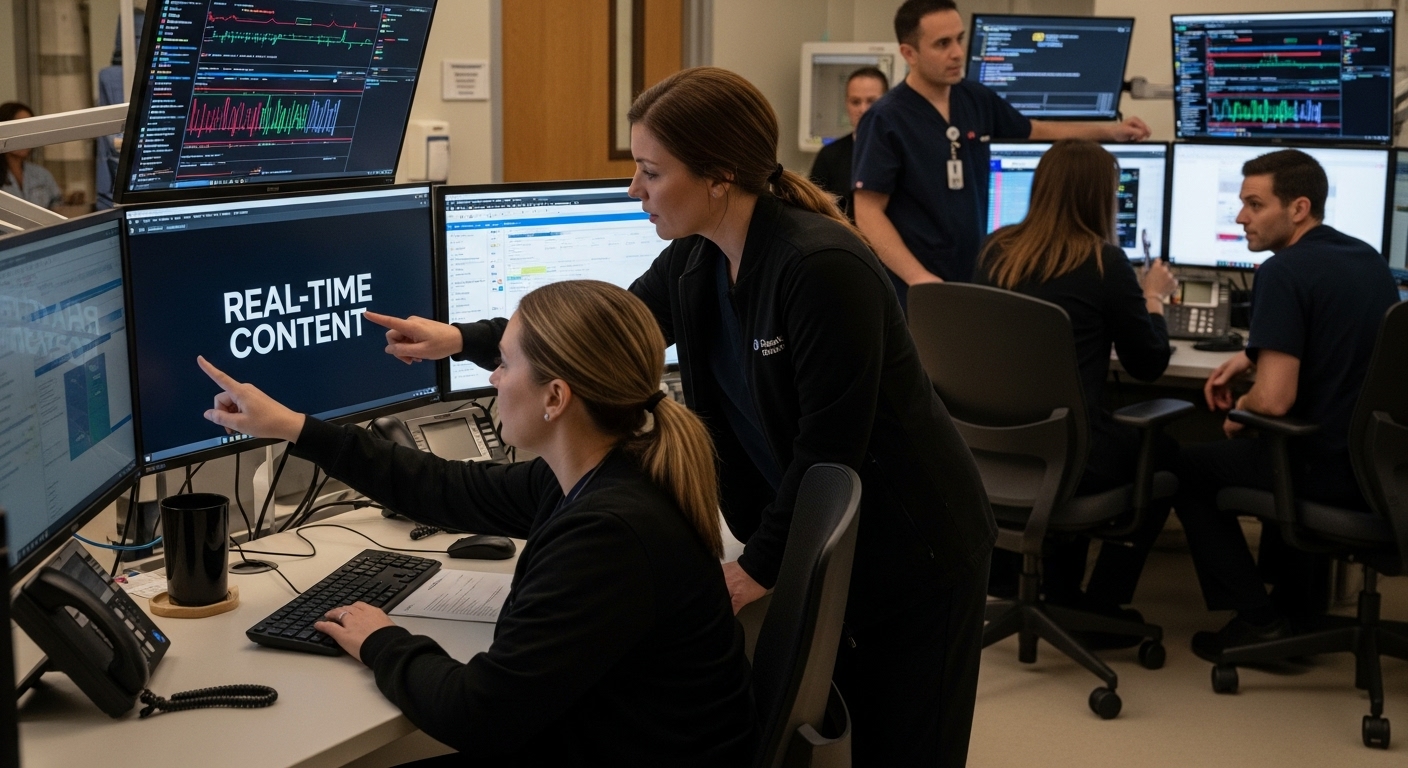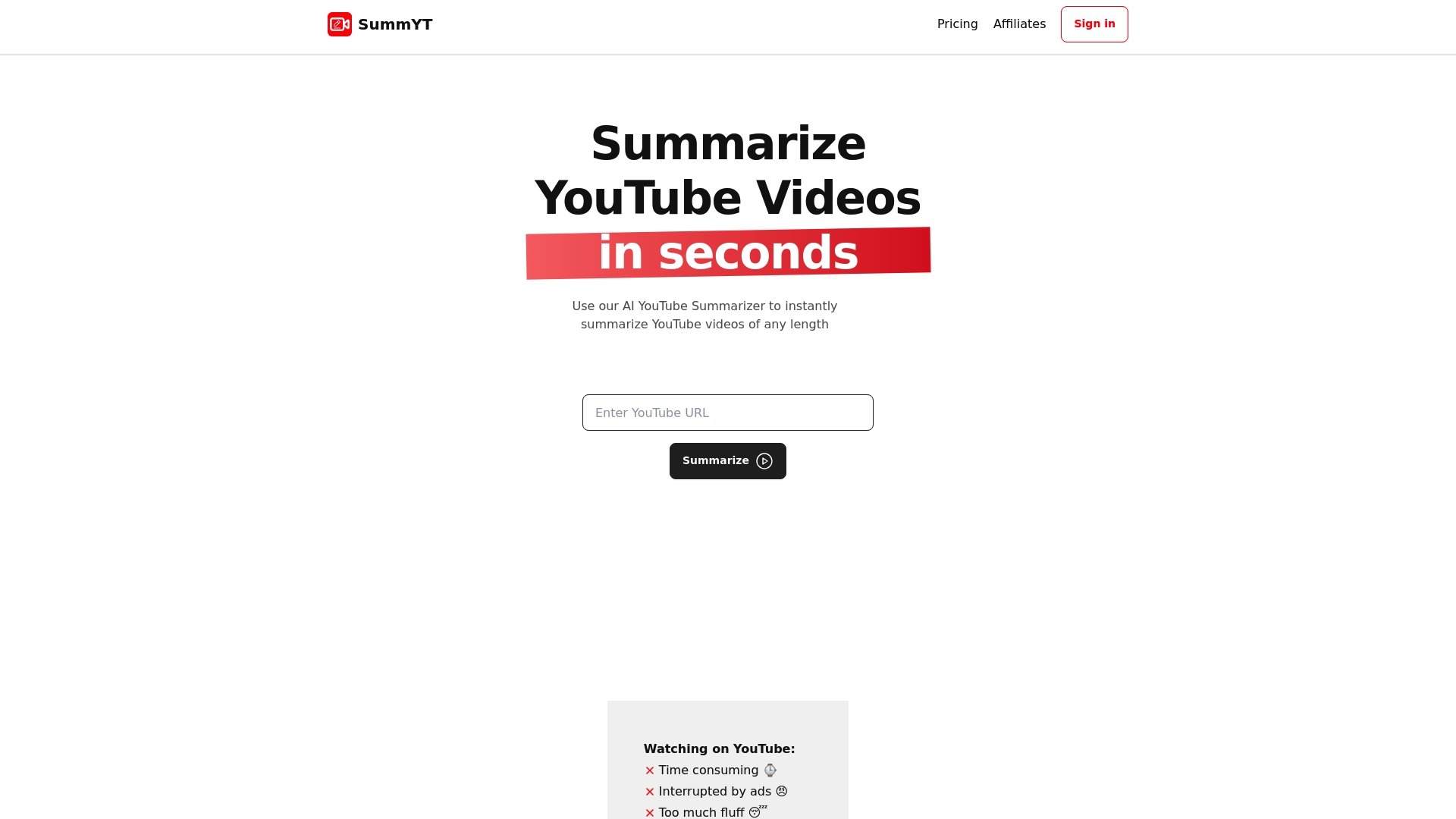Understanding Real-Time Content Summarization

Real-time content summarization is shaping the way we handle the nonstop flow of information online. Most people get swamped by endless news alerts, financial updates, or social media feeds. But it turns out that advanced AI systems now generate summaries in just seconds, helping people make sense of all that chaos almost instantly. The twist is that these summary tools do more than just save time—they actually allow professionals from healthcare to finance to respond faster to breaking events than ever before.
Table of Contents
- What Is Real-Time Content Summarization?
- Why Real-Time Content Summarization Is Important
- How Real-Time Content Summarization Works
- Key Concepts In Real-Time Content Summarization
- Real-World Applications Of Real-Time Content Summarization
Quick Summary
| Takeaway | Explanation |
|---|---|
| Real-time summarization combats information overload | This technology rapidly distills complex data into concise insights, helping users navigate large volumes of information efficiently. |
| Instant summaries enhance decision-making speed | Professionals can make informed decisions quickly by receiving context-aware summaries of evolving situations in various sectors. |
| Key sectors using summarization include finance and healthcare | Real-time summarization is critical for responding to challenges in areas like financial markets, emergency management, and public health monitoring. |
| Machine learning improves summarization accuracy | Adaptive techniques enable systems to learn from user feedback, continuously enhancing the quality of generated summaries. |
| Applications span diverse domains | From media tracking to academic research, real-time summarization provides valuable insights across many fields, facilitating effective information management. |
What is Real-Time Content Summarization?
Real-time content summarization represents an advanced technological approach to processing and condensing continuous streams of information instantaneously. This innovative technique leverages artificial intelligence and natural language processing to transform large volumes of incoming data into concise, meaningful summaries that capture essential insights without overwhelming the user.
Core Mechanisms of Summarization
At its fundamental level, real-time content summarization operates through sophisticated algorithms that rapidly analyze text, identifying key themes, critical information, and contextual relevance. These algorithms utilize multiple computational techniques to extract and synthesize information:
- Semantic analysis to understand context and meaning
- Statistical text processing for identifying important content
- Machine learning models trained on diverse datasets
By continuously monitoring information streams, these systems can generate summaries within seconds, providing users with immediate understanding of complex or evolving situations.
The following table summarizes the core mechanisms and technological approaches to real-time content summarization, helping clarify the key processes and their functions described in this section.
| Mechanism or Technique | Description |
|---|---|
| Semantic Analysis | Understands context and meaning in incoming data streams |
| Statistical Text Processing | Identifies and prioritizes the most important content using data-driven methods |
| Machine Learning Models | Learns from large datasets to improve summary accuracy and relevance |
| Text Tokenization & Linguistic Parsing | Breaks text into components and analyzes grammar to aid content understanding |
| Contextual Understanding | Maintains relevancy by extracting information relevant to the current situation |
| Probabilistic Ranking | Assigns significance scores to content sections to prioritize summary content |
Practical Applications and Significance
According to research from ACM Digital Library, real-time content summarization has critical applications across multiple domains, including:
- Emergency response and crisis management
- Financial market monitoring
- Social media trend analysis
- News and media content tracking
- Academic and research information processing
The primary value of real-time content summarization lies in its ability to help professionals and individuals navigate information overload, providing rapid comprehension of complex topics without requiring extensive time investment. By transforming massive data streams into digestible insights, this technology enables more efficient decision making and knowledge acquisition.
The table below highlights the main domains where real-time content summarization delivers value, along with the primary benefits for each sector as discussed in the article.
| Sector/Domain | Main Benefit of Real-Time Summarization |
|---|---|
| Emergency Response | Enables rapid understanding of unfolding situations for quick, informed action |
| Financial Markets | Allows timely analysis and decision-making in fast-moving market environments |
| Social Media Analysis | Summarizes trending topics for better engagement and awareness |
| News and Media | Streamlines news tracking for editors and reporters to keep up with fast news cycles |
| Academic Research | Facilitates efficient review of large volumes of publications and findings |
| Public Health Monitoring | Provides actionable insights quickly during crises or health emergencies |
Why Real-Time Content Summarization is Important
In an era characterized by information explosion, real-time content summarization emerges as a critical technological solution for managing overwhelming data streams. The exponential growth of digital content has created an environment where professionals and individuals struggle to effectively process and understand the continuous flow of information across various domains.
Addressing Information Overload
Modern knowledge workers are constantly bombarded with vast amounts of data from multiple sources, including news feeds, social media, research publications, and professional communications. Explore how newsrooms leverage summarization techniques to manage complex information landscapes. Real-time content summarization provides a strategic approach to combat information overload by:
- Rapidly distilling complex information into concise insights
- Enabling quick comprehension of critical updates
- Reducing cognitive burden associated with processing extensive content
According to research in medical informatics, this technology supports professionals in making timely, informed decisions by presenting essential information efficiently.
Strategic Decision Making and Efficiency
The primary significance of real-time content summarization lies in its ability to transform how individuals and organizations consume and interpret information. By providing instantaneous, context-aware summaries, this technology enables:
- Faster response times in dynamic environments
- More comprehensive understanding of complex topics
- Enhanced productivity through streamlined information processing
- Reduced time spent on manual content filtering
Professionals across sectors from finance and journalism to healthcare and emergency management can leverage these summaries to stay ahead of rapidly evolving situations, making more strategic and well-informed decisions with minimal time investment.
How Real-Time Content Summarization Works
Real-time content summarization is a sophisticated technological process that combines advanced computational techniques to transform complex data streams into concise, meaningful insights. The mechanism relies on intricate algorithms and machine learning models that work seamlessly to process and distill information almost instantaneously.
Algorithmic Processing and Analysis
The core of real-time content summarization involves multiple interconnected computational stages. Discover emerging AI summarization tools that demonstrate these advanced techniques. These algorithms perform rapid, multilayered analysis through several key processes:
- Text tokenization and linguistic parsing
- Semantic relevance scoring
- Contextual understanding and information extraction
- Probabilistic ranking of content significance
Natural language processing (NLP) technologies play a critical role in comprehending context, identifying key themes, and maintaining semantic coherence throughout the summarization process.
Machine Learning and Adaptive Techniques
According to research in adaptive summarization, modern real-time summarization systems employ sophisticated machine learning models that continuously improve their performance. These intelligent systems can:
- Learn from user interactions and feedback
- Dynamically adjust summarization parameters
- Recognize patterns across different content types
- Personalize summary generation based on individual preferences
By integrating advanced neural network architectures and deep learning techniques, these systems can generate highly accurate and contextually relevant summaries across diverse information domains, from technical reports to social media streams.
Key Concepts in Real-Time Content Summarization
Real-time content summarization encompasses a complex ecosystem of advanced technological principles and methodological approaches designed to transform continuous information streams into digestible insights. Understanding its fundamental concepts requires exploring the intricate mechanisms that enable rapid, intelligent content processing.
Fundamental Technological Foundations
The core technological infrastructure of real-time summarization rests on several critical computational principles. Explore why video content summarization matters to appreciate the broader context of these technologies. Key foundational concepts include:
- Streaming data processing architectures
- Incremental learning algorithms
- Dynamic information extraction techniques
- Computational linguistic models
These technologies work in concert to enable systems that can analyze and condense information with unprecedented speed and accuracy, maintaining contextual integrity across rapidly changing data landscapes.
Computational and Linguistic Processing Methods
According to research on streaming document summarization, real-time content summarization integrates multiple sophisticated processing methods:
- Extractive summarization techniques that identify and preserve original content segments
- Abstractive summarization approaches that generate novel, context-aware representations
- Event detection algorithms that recognize emerging themes and shifts in information streams
- Novelty scoring mechanisms to prioritize unique and significant content
The interplay between computational linguistics, machine learning, and advanced algorithmic design enables these systems to generate summaries that are not just condensed, but intelligently curated to provide maximum informational value within minimal temporal constraints.

Real-World Applications of Real-Time Content Summarization
Real-time content summarization has emerged as a transformative technology with profound implications across numerous professional and societal domains. Its ability to rapidly process and distill complex information streams makes it an invaluable tool for decision makers, researchers, and organizations facing information-intensive challenges.
Critical Sectors and Strategic Applications
The versatility of real-time content summarization enables its deployment across diverse professional landscapes. Explore summarization techniques for lengthy video content to understand its adaptive capabilities. Key sectors leveraging this technology include:
- Healthcare and medical research monitoring
- Financial market intelligence and trading
- Emergency response and crisis management
- Academic and scientific research tracking
- Journalism and media intelligence
These domains benefit from instantaneous insight generation, allowing professionals to stay ahead of rapidly evolving information environments.
Public Health and Crisis Management
According to research in public health surveillance, real-time content summarization plays a critical role in monitoring and responding to emerging global challenges. During epidemics, natural disasters, or social disruptions, these technologies provide:
- Rapid identification of emerging trends
- Quick dissemination of critical information
- Actionable insights for policy makers
- Enhanced situational awareness
- Efficient resource allocation strategies
By transforming massive, complex data streams into concise, meaningful summaries, real-time content summarization empowers organizations to make informed decisions with unprecedented speed and accuracy.

Ready for Instant Video Summaries? Get More From Every Minute
Struggling with never-ending content and information overload, as described in our exploration of real-time content summarization? Spending hours watching lengthy webinars, lectures, or interviews just to get the main points can be overwhelming. The problem is clear. You want concise, relevant insights without wasting your valuable time. Real-time content summarization is about condensing large streams of information in seconds, and that is exactly what SummYT brings to YouTube videos.

With SummYT, you instantly unlock the power of automatic AI-generated summaries for any YouTube video, transforming hours of content into actionable takeaways. Save time, focus on what matters, and keep up with your learning or professional goals. Discover how SummYT’s AI-powered video summarization delivers the essential insights you need. Visit SummYT now and experience the speed and clarity of real-time video summaries. Try for free and start reclaiming your time today.
Frequently Asked Questions
What is real-time content summarization?
Real-time content summarization is a technological approach that uses artificial intelligence and natural language processing to process continuous streams of information and generate concise, meaningful summaries almost instantaneously.
How does real-time content summarization help with information overload?
It addresses information overload by rapidly distilling complex information into concise insights, enabling quick comprehension of critical updates and reducing the cognitive burden of processing extensive content.
What are the main applications of real-time content summarization?
Real-time content summarization is applied in various domains, such as emergency response, financial market monitoring, social media trend analysis, news tracking, and academic research, helping professionals make informed decisions efficiently.
What technologies are involved in real-time content summarization?
The process involves advanced algorithms, machine learning models, natural language processing techniques, and methods for both extractive and abstractive summarization, enabling systems to analyze and condense information rapidly and accurately.
Recommended
- Understanding Summarization for Newsrooms
- Understanding Why Summarize Video Content Matters
- Understanding Video Summarization for Field Reporters
- Understanding Why Summarizing Videos Matters
- Using Data for Content Strategy: Drive Results in 2025



